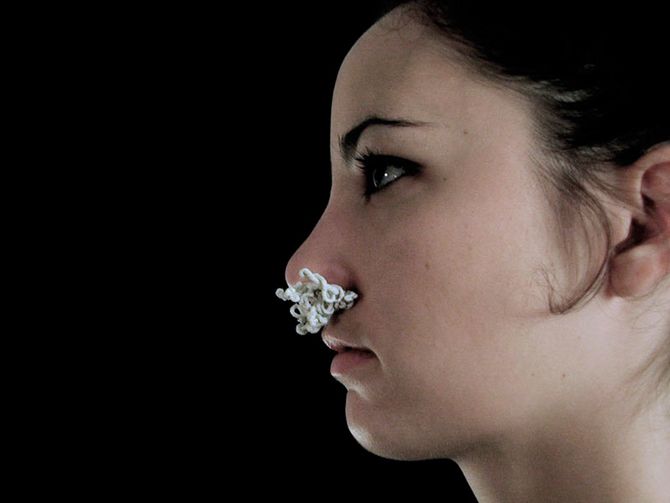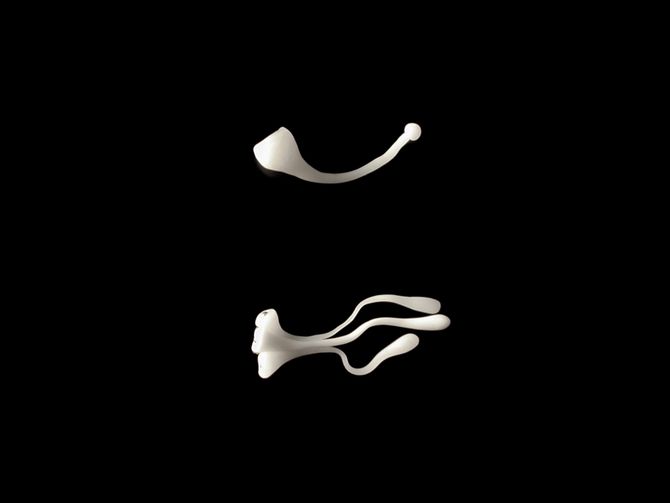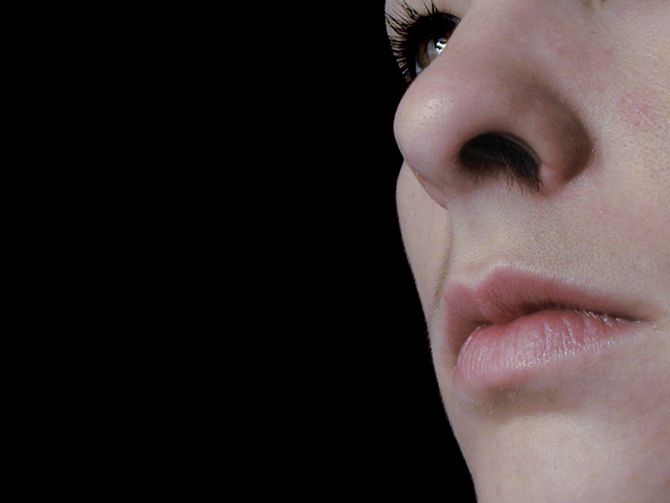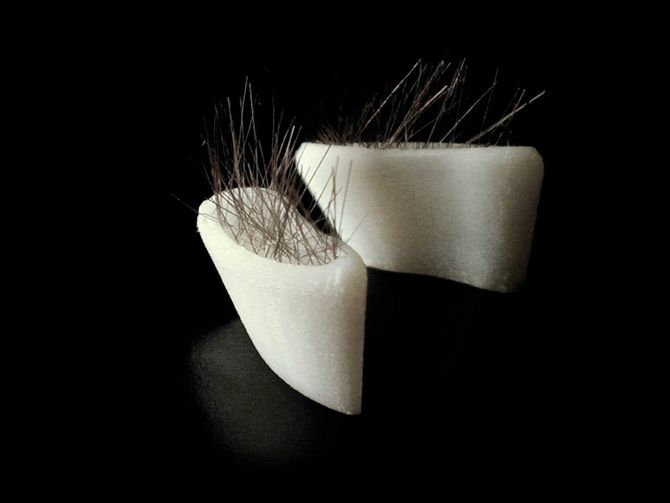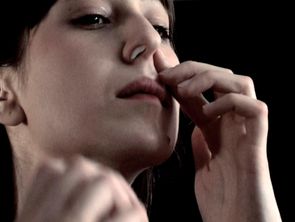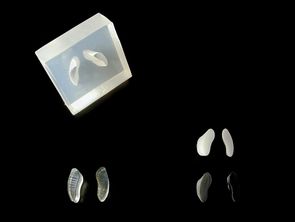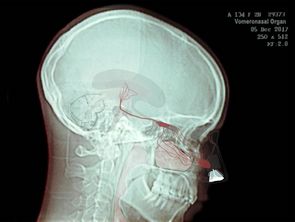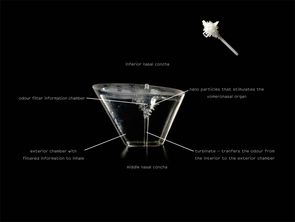Sniffing others / Project
How can we perceive a genetically compatible mate?
"We know that smell is an important cue. People literally sniff out their partner” as described in » Are we still Evolving. However half of our smell receptors have fallen into disuse, but if stimulated could become active again.
Also, recent studies have demonstrate that women taking the contraceptive pill decrease their ability to detect odours, preferring genes similar to their own, eventually choose a mate who is not genetically suitable.
Sniffing others explores the development of tools that will allow us to perceive, through smell, other people’s genetic code.

- 01 In 2012 neck collars are used to induce others odour capture.
Smell augmentation
In humans the vomeronasal organ, used to detect pheromones, regresses as we leave childhood, but if stimulated could become active again. Smell augmentation using a sensory nanoparticles interface stimulates the vomeronasal organ and transmits body odour information, enabling precise pheromone recognition.
02 Person using a sensory extension to enhance odour recognition
03 Nose plugs
04 Illustration explaining how sensory interfaces can stimulate vomeronasal organ
05 Nose plug with interior detail, prototype, clear SLA.
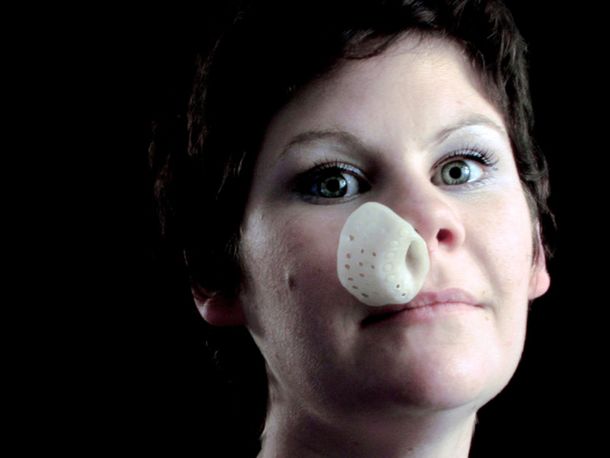
- 06 Nasal objects start to transform appearance and beauty concepts, Sniffing Others, New organs of perception, prototype.
A timeline of smell augmentation
Smell augmentation would be developed gradually through the use of several accessories. Not only would new technologies have to be developed to assist humans in fine-tuning their noses, but also notions of what is socially acceptable would have to be refined, as any adaptation would not be automatically accepted.
The timeline explores how culturally and socially these new smelling perceptions might be absorbed into our everyday lives, through new kinds of interactions. Starting with nose related items that would stimulate our smell receptors, to cloth that would emphasize scent glands, such as the t-shirt and the neck collar, to nose plugs that activate smell.
As time passes and sense of smell gets stronger, growing hair out of your nose might be regarded as an evolutionary step.
Collaborators & Acknowledgments
Calouste Gulbenkian Foundation
Royal College of Art, Design Interactions Department: Professor Anthony Dunne and Ms. Fiona Raby
Models:
Lidia Bravo
Claire Ducruet
Mauro Perosin
Annalisa Tonini
Chiara Zizola
Credits:
Susana Soares

